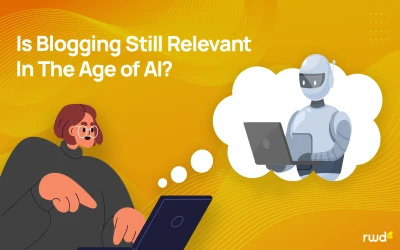
Those who pay attention to these things will have noticed that how people search online is changing. They aren’t just typing a couple of keywords into Google anymore. They’re asking full questions, looking for clear answers, and increasingly turning to AI tools like ChatGPT to get them fast.
At RWD, we’ve been helping businesses build websites and improve their online presence for over 20 years. One thing’s become really obvious: the way we write content can’t stay the same. Just stuffing pages with keywords and hoping Google notices doesn’t cut it anymore. Today, content needs to be clear, genuinely helpful, and actually answer the questions your customers are asking.
Old-School SEO vs. Conversational Content
For a long time, SEO meant focusing on keywords. You’d research search terms and then pack your page full of them. For example:
“Our Norwich-based dentist offers dental implants, teeth whitening, and family dentistry. Contact our Norwich dentist today for an appointment.”
This may have worked back in the day - Google would recognise the keywords and rank your page. However, for the end user it too often felt robotic and didn’t really answer the question that they had.
Now, AI looks for content that gives clear and direct answers. In 2025, an AI-friendly version of the same content might read:
“Looking for dental implants or teeth whitening in Norwich? Our family-run practice offered personalised care for every patient. Book a consultation today and find out how we can help you smile with confidence.”
Notice the difference? It’s natural, answers questions a person might actually ask, and is structured in a way AI can easily pull from. It’s content that’s written for real people - and it still performs well in search.
Why This Matters
In most instances, AI tools such as ChatGPT will collate answers from existing content of the website. They look for content that:
- Answers the user’s question directly
- Is structured clearly, in an easily digestible format
- Comes from a trustworthy source
The good news is that you do not need to start from scratch in order to adapt. With a few straightforward changes, you can make a real difference. These include:
1. Answer questions directly
Think about the questions that your customers typically ask on a daily basis. Instead of listing your services, take the time to explain them in plain language. If you previously would say “We offer digital marketing services,” try:
“Need help with social media, SEO or email marketing? We create strategies that will help your business to grow.”
2. Make content easy to read
Use headings, subheadings, and bullet points. Structured pages aren’t just easier for people to scan - they also help AI pick out the information quickly.
3. Write naturally
Imagine you’re explaining something to a friend. Avoid jargon unless your audience expects it. Short sentences, simple words, and a friendly tone make your content more engaging - and more likely to be picked up by AI.
4. Keep information current
AI tools tend to ignore outdated information. Make sure your pages show your latest offerings, prices and services. Regular updates signal both to visitors and AI that your site is active.
5. Add an FAQ section
Answering common questions clearly is a huge help. Not only does it benefit your visitors, but AI tools can also use those answers in responses.
AI Isn’t Here to Replace Google
AI is changing how people search, which affects how businesses should communicate online. Clear, human, and helpful content will reach both your audience and AI tools effectively.
Think of it as writing for people first, AI second. Do that, and you’re future-proofing your content while giving your business the best chance of being found - whether that’s on Google or through a ChatGPT answer.
At RWD, helping clients make their websites work harder is what we do every day. With a few tweaks and a little planning, we’re helping our clients to adapt to the growth of AI tools.


